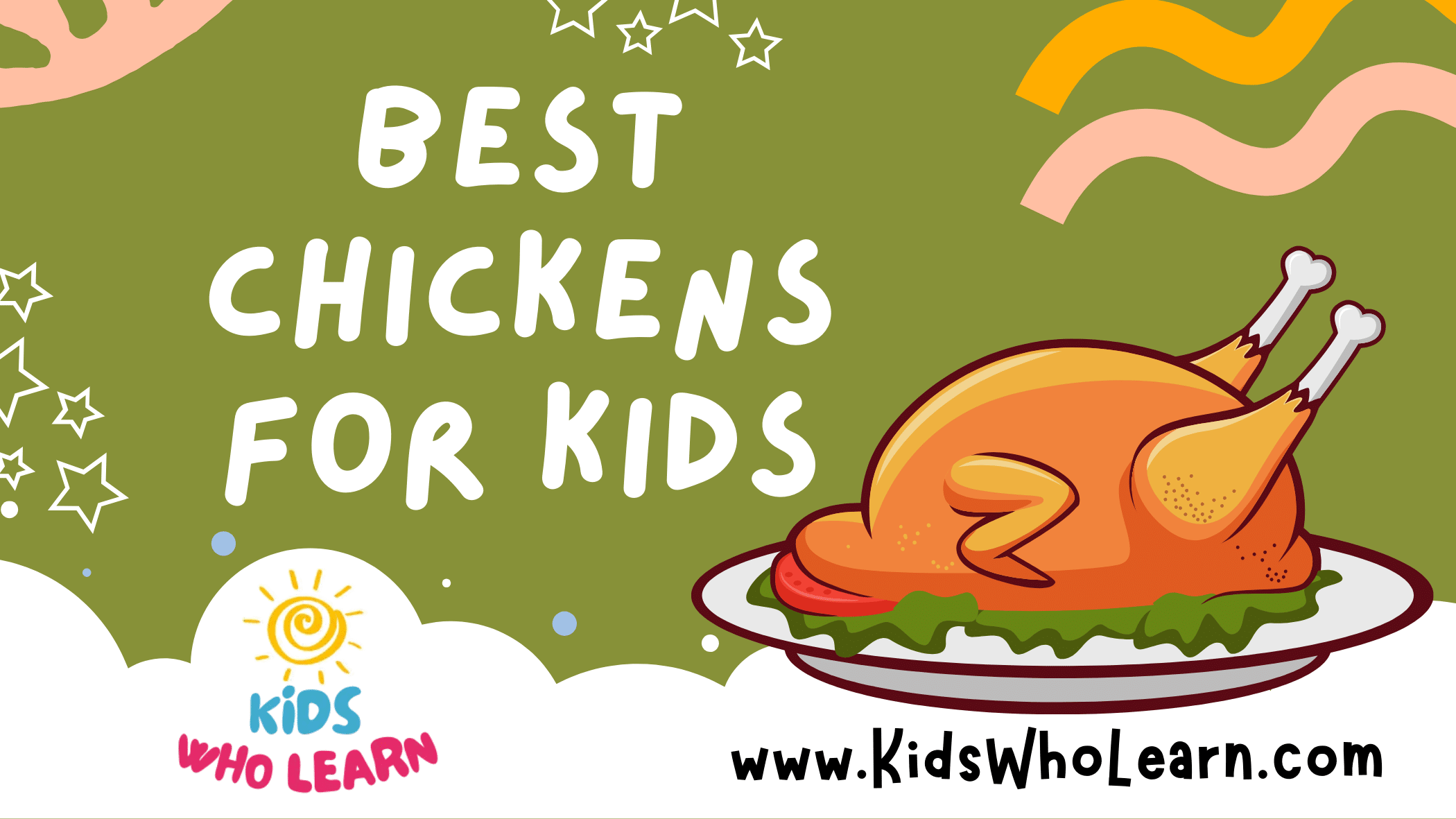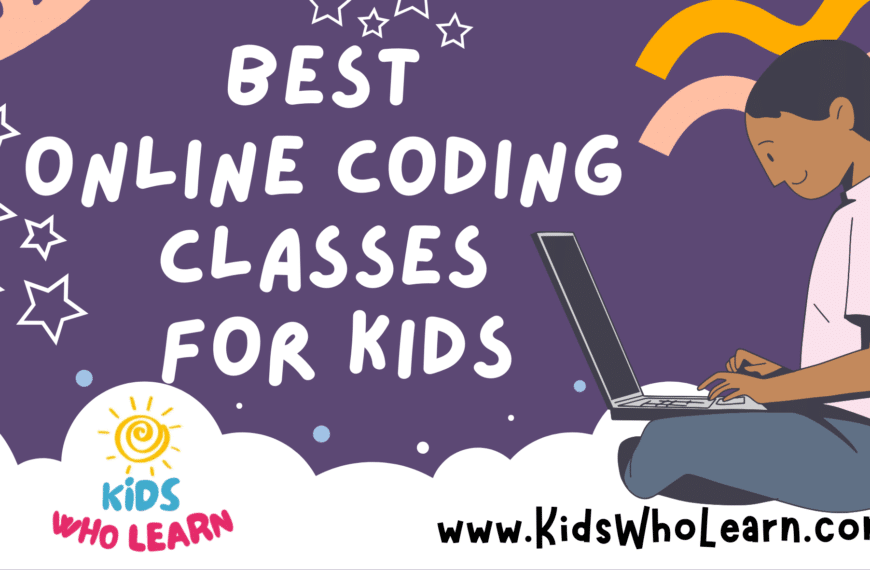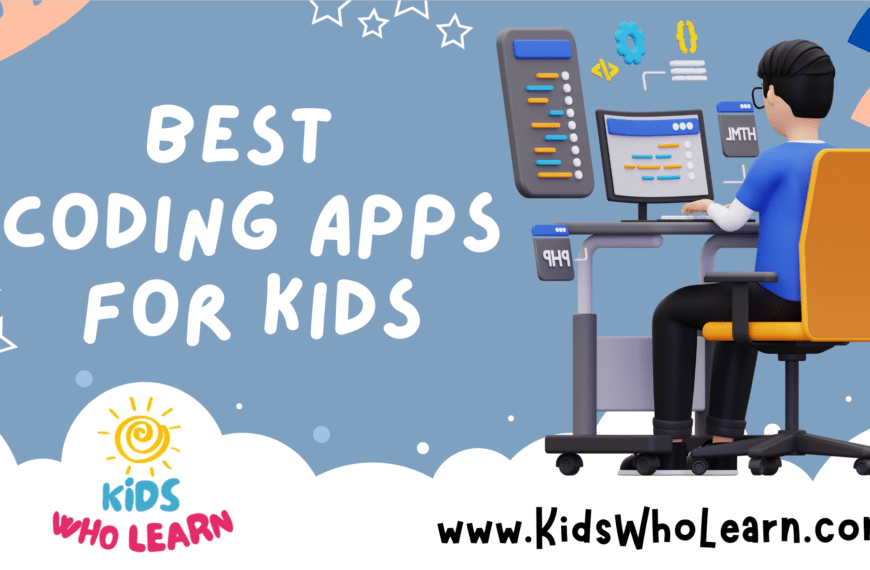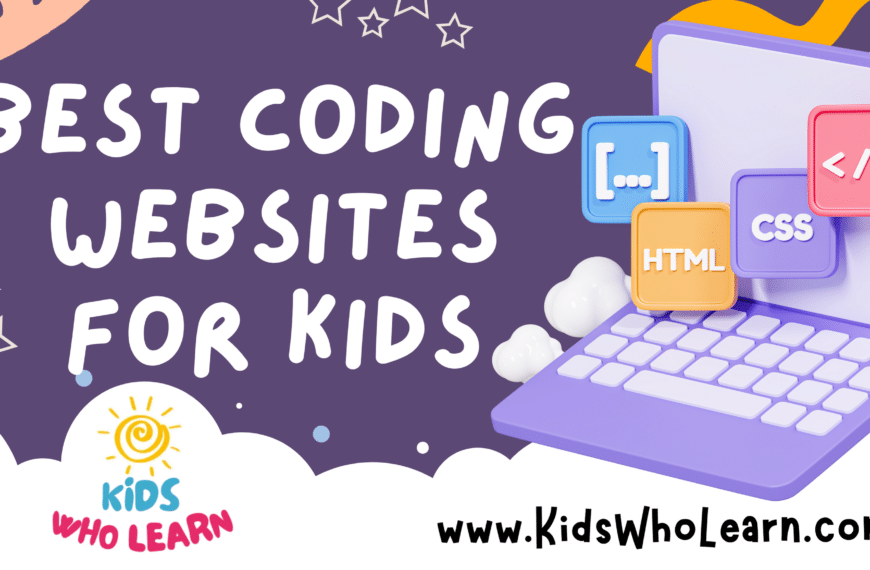In today’s tech-driven world, coding has become a fundamental skill akin to reading and writing. As we prepare our children for the complexities of the digital age, the conversation often turns to the best ways to introduce them to the art of programming. Choosing the right approach to teaching coding can be the difference between empowering kids with a valuable skill set and overwhelming them with too much too soon.
When considering coding for children, it’s vital to select age-appropriate programming languages and resources that make learning both fun and educational. There are various platforms designed with the younger audience in mind, integrating game-based learning to captivate their interest. These platforms often provide a supportive learning environment that emphasizes creativity, problem-solving, and logical thinking—all of which are crucial abilities in today’s and tomorrow’s technological landscape.
Key Takeaways
- Coding equips children with essential skills for the digital age.
- Selecting appropriate languages and resources simplifies learning.
- Game-based platforms can make coding engaging and educational.
The Importance of Coding for Kids
When you introduce your child to coding, you’re not just exposing them to a critical language of technology; you’re cultivating valuable skills for their future. Coding is a foundational element in the STEM education model and an entry point to the vast field of computer science.
Kids learn computational thinking through coding, enabling them to tackle complex problems by breaking them down into smaller, more manageable parts. This skill is essential and broadly applicable across numerous disciplines.
Coding also enhances creativity. It encourages kids to imagine and build their own worlds. Whether they’re creating simple animations or intricate games, they’re learning to design and innovate.
Another vital skill reinforced by coding is problem-solving. Your child will face challenges that require patience and persistence to overcome, thus boosting their resilience and determination.
Moreover, analytical thinking derived from programming teaches kids to assess situations logically and make data-driven decisions.
Lastly, nurturing logical thinking early through coding has long-term benefits. It’s these step-by-step reasoning skills that enable kids to tackle math and science subjects with confidence.
Here’s how coding impacts various skill areas:
| Skill Set | Benefit from Coding |
|---|---|
| Computational Thinking | Breaks down complex problems |
| Creativity | Fosters imagination |
| Problem Solving | Encourages finding solutions |
| Analytical Thinking | Promotes data-driven analysis |
| Logical Thinking | Develops step-by-step reasoning |
By encouraging an early interest in coding, you’re not only preparing your child for their academic career but also equipping them with essential life skills.
Selecting the Right Programming Language
When you’re exploring coding for kids, choosing the right programming language is crucial as it impacts their understanding and interest in technology.
Overview of Popular Languages for Kids
There are several popular programming languages suited for children. Scratch is a visual language that breaks down complex concepts into approachable, interactive blocks. Python is known for its simplicity and readability, making it an excellent first text-based language. JavaScript extends coding skills into web development, while Java is well-established, teaching object-oriented programming. For younger children, ScratchJr offers a simplified version of Scratch. Tools like Blockly and Tynker provide a blend of block coding and text coding, easing the transition to more advanced languages.
Block-Based Coding vs Text-Based Coding
Block-based coding involves dragging and dropping blocks that represent code snippets, allowing children to focus on coding concepts without worrying about syntax. Popular block-based platforms include Scratch, Blockly, and Tynker. In contrast, text-based coding with languages like Python, Java, and JavaScript exposes kids to the actual syntax used by programmers. Each has its place: block coding for initial exposure and comprehension, text-based for deepening coding skills and preparing for more complex algorithms.
Age-Appropriate Coding Languages
| Age Range | Coding Type | Suggested Languages/Apps |
|---|---|---|
| 5-7 | Block Coding | ScratchJr, Blockly |
| 8-12 | Hybrid | Scratch, Tynker |
| 13+ | Text Coding | Python, JavaScript, Java |
Your child’s age is a strong indicator of the appropriate type of coding to introduce. Younger kids thrive with block-based coding which forgives syntax errors and focuses on logic and structure. As they grow older, hybrid environments that transition into text coding can cultivate their coding skills further. Teenagers can move to text-based programming languages where they can learn to write actual code and develop complex algorithms.
Educational Coding Programs and Resources
In the landscape of STEM education, there are a wealth of resources available for young learners. These range from introductory websites to advanced platforms that cater to different stages of a child’s coding journey.
Introduction to Coding Websites
Your first foray into the world of programming can start with websites designed to teach coding fundamentals in an engaging way. Scratch, developed by MIT, is a prime example where kids can learn to code by creating stories, games, and animations. It’s a free, online community-driven platform that makes learning the basics of software development enjoyable for children.
Another key player is Code.org, renowned for its Hour of Code tutorials and comprehensive coding curricula across all grade levels. For those interested in web development, Khan Academy offers free courses in HTML, CSS, and JavaScript, providing a solid foundation for budding web developers.
Interactive Coding Apps
Apps provide a tactile and interactive environment for learning to code. For example, Osmo offers a hands-on learning experience with its iPad-integrated coding apps for kids, introducing concepts like loops and if-then statements through physical play.
On mobile, whether Android or iOS, there are apps like Lightbot, which teach programming logic through puzzles. These apps are excellent for reinforcing concepts in a convenient, on-the-go format and often support a range of skill levels to accommodate growth.
Platforms for Advanced Learning
As your skills grow, platforms like Unity offer a more advanced learning curve into the realms of game development and virtual reality. Unity uses C#, a more complex programming language, allowing you to develop sophisticated interactive experiences.
For those interested in iOS app development, learning Swift through Apple’s Swift Playgrounds app provides a more structured path to creating apps for iPhone and iPad. If Android is more your focus, Kotlin is the go-to language with available learning resources to guide you through Android app development.
It’s important to find the right coding program that matches your interests and progresses at a suitable pace for your learning curve. Look for supportive online communities to enhance your software development knowledge as you grow.
Engaging Kids with Coding Games and Activities
Introducing your kids to coding can be both fun and educational. Through immersive games and tangible coding tools, they can develop critical problem-solving skills and a solid understanding of programming basics.
Coding Games for Developing Logic
- Hour of Code: This global movement offers a variety of hour-long coding challenges designed to teach the basics of programming in an engaging way. You’ll find activities that cater to different interests, ensuring your kids stay captivated while learning.
Game Skill Focus Lightbot Sequential logic Blockly Games Problem-solving Roblox Game creation Code Karts Pre-coding logic
Hands-On Coding Tools and Toys
- Osmo: Combines physical blocks with interactive games to teach programming fundamentals.
- Osmo Coding Kit: Helps kids learn through play with colorful blocks that snap together to create sequences.
- Coding Robot: These hands-on robots captivate kids by bringing code to life through movement and interaction.
Robot Description Wonder Workshop Offers a range of robots that teach coding through play. Coding Robot Tools Provide a tactile coding experience designed to reinforce computational thinking.
Guiding the Next Generation
Equipping young minds with coding skills paves the way for advanced problem solving and analytical thinking. This journey begins with two critical steps: building a supportive coding community and enhancing cognitive skills through resilience.
Fostering a Coding Community
To thrive in coding, you need an environment that encourages experimentation and peer-to-peer learning. Online platforms such as Codecademy or CodeMonkey create an accessible space for you to connect with others. These communities offer:
- Structured Learning Paths: Modules and challenges designed for different age groups to ensure progressive learning.
- Social Learning: Opportunities to share code, collaborate on projects, and gain feedback from a global community.
Discussion forums and real-time coding sessions form the backbone of these communities, enabling you to find mentorship and inspiration.
Building Resilience and Cognitive Skills
Resilience in coding means not getting discouraged by bugs or errors. It’s a fundamental trait for mastering computational thinking and logical thinking. CodeWizardsHQ integrates resilience-building exercises into its lessons, with a focus on:
- Math and Logic Puzzles: Strengthens your ability to apply mathematical concepts to coding challenges.
- Project-Based Learning: Encourages trial and error as you create real-world applications, reinforcing analytical and problem-solving skills.
These practices help you progress from basic to advanced coding tasks. They teach you how to approach complex problems methodically, breaking them down into smaller, manageable parts.
Preparing for the Future of Tech
Your understanding of coding now shapes your readiness for tomorrow’s technological advancements. This section explores how coding is woven into STEM education and opens doors to diverse career opportunities.
The Role of Coding in STEM Education
Coding forms the backbone of STEM (Science, Technology, Engineering, and Mathematics) education by cultivating computational thinking. You grasp essential concepts like logical reasoning and problem-solving as you learn different programming languages.
- Computer Science: Mastering languages such as Java and C#, equips you with a robust foundation in developing software.
- Web Development: Through HTML and CSS, you gain the skills to build and design user-friendly websites.
- Mathematical Foundation: Programming reinforces your mathematical skills, integral to algorithms and system designs.
Career Paths and Opportunities
Fluency in coding paves diverse career trajectories within tech industries.
- Software Development: Strong C# or Java skills qualify you for creating complex software solutions.
- Web Development: An understanding of HTML and CSS is crucial for careers in designing responsive and visually appealing websites.
- Emerging Technologies: With your foundation in coding, you are well-prepared to adapt to upcoming innovations in tech.
The journey into coding for kids is an investment in their ability to navigate and succeed in a future where technology is ubiquitous. Your commitment to integrating coding skills now can lead to a rewarding path in the ever-evolving landscape of technology careers.
Supportive Learning Environments
When introducing coding to kids, creating a supportive learning environment is crucial. Resources like Code.org and Tynker offer a friendly entry point with interactive platforms that guide you through the basics. These sites use simple blockly languages, which allow young learners to grasp coding concepts without being overwhelmed by syntax.
You’ll notice that environments like Scratch, developed by the MIT Media Lab, focus on creativity and collaboration. They provide a space where you can share projects and learn from peers, fostering a community where help and positive feedback are readily available. This collaborative atmosphere is a significant confidence booster.
Kodable and Bitsbox are designed to grow with your skill level. They start with basic games and challenges and progress to more complex tasks as you gain experience. For kids eager for a taste of real-world programming, CodeCombat presents coding challenges in an adventure game format, reinforcing lessons in a fun and engaging way.
Moreover, sites like SoloLearn give you access to an assortment of programming languages. They provide a structured learning environment where you can write actual code, typically for older kids who’ve mastered the basics. Coding games for kids often act as a bridge between visual block coding and text-based programming, ensuring that the learning process is never dull.
Remember, while websites and platforms provide the tools, your encouragement and support are key to nurturing their curiosity and perseverance in coding. With these resources, you empower your young learners to develop essential skills that they will carry into the future.
Frequently Asked Questions
In this section, you’ll find targeted answers to common questions that will help you navigate the variety of coding resources for kids.
What are the top free coding programs available for children?
Scratch, developed by MIT, is widely used for its intuitive drag-and-drop interface. Code.org also offers free coding lessons and is used extensively in schools.
Which platforms offer free coding classes for children similar to Google’s offerings?
Codecademy offers free courses tailored for younger learners, providing an interactive environment similar to Google’s CS First. Additionally, Scratch from MIT is a free platform often used in educational settings.
What age is considered most suitable for a child to start learning coding?
Children as young as 5 can begin learning the basics of coding using visual programming languages like ScratchJR. By the age of 7 or 8, many can move on to more complex concepts with platforms like Scratch or Tynker.
What coding language should a beginner child start with for an optimal learning experience?
Young beginners often start with visual programming languages like Scratch for a solid foundational understanding. As they progress, Python can serve as a good first text-based language due to its readability and widespread use.
How does Khan Academy’s coding curriculum for kids compare to other options?
Khan Academy provides comprehensive interactive lessons that cover not only programming but also computer science principles, making it a robust option that rivals many paid alternatives.
Where can I find local coding classes for kids?
Check your community centers, libraries, or local schools for any programs they might offer. Additionally, websites such as Code.org can connect you to local workshops and coding events specifically designed for children.










